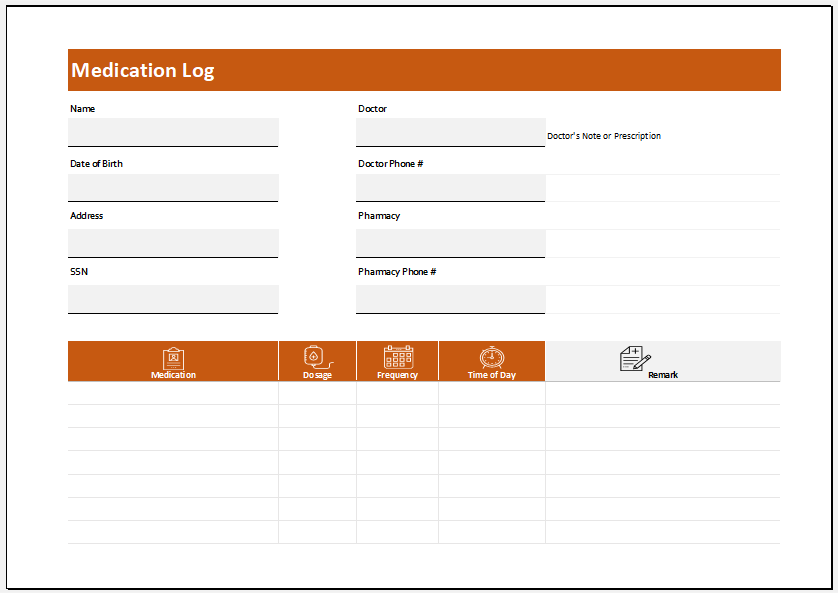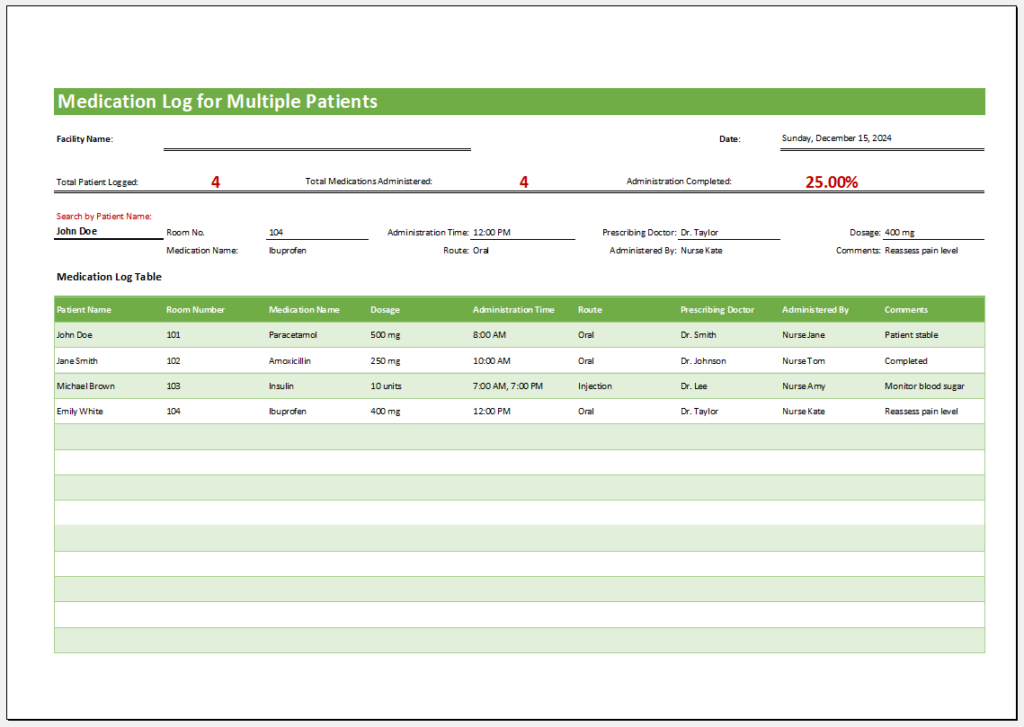Multiple Patient Medication Log
We come across many patients in our lives who are on long-term medication. Keeping track of their medicines at times becomes a real task, and most of the time, it results in poor compliance of the patients. After all, who wants to take all the big packs of pills three times a day for years and years?
In such scenarios, medication logs are of great help because they help you keep track of the medication and also result in better compliance with the patient. If a patient of some chronic illness gets his medicine regularly, only then can he either get rid of the disease or at least avoid the consequences and complications of the chronic ailments.
Diabetes, for example, is a disease that requires a lot of constant management at every moment of life. If a diabetic patient is on insulin therapy and has to take those subcutaneous injections three times a day, there are chances that he starts losing interest. There is also a high chance of the patient to stop taking his insulin at all. He might forget when the last time he took his medicine was. So, keeping track makes it easier to remember the previous dose and whether it was administered or not is beneficial in many ways.
Medication logs are available in many forms now. You can choose what suits you the best. But if you think you can track your medication routine by yourself, then a self-medication log is for you.
This log contains all the things that are required for the maintenance of the record concerning medicines. It also tells us the route of administration. This way, one can track down the medication and its effects on the body. This medication log can also be produced at the time of the doctor’s visit so that he knows what is going on with the disease of his patient even if the doctor is not around all the time.
In a patient medication log, one has to write the name of the patient, his age, gender, and primary diagnosis. For example, a patient with diabetes will have to write a diagnosis at the top of the patient medication log.
After that, we can find some columns and rows given for the data entry. This data is the routine that we are going to follow while on long-term medication. For example, the first column is for the date where we write down the date on which medication is being given. In front of the date, we will write the name of the medicine in its generic form. The dose of the drug can also be written if the patient knows exactly what it is. If the attendant is administering, they can also fill out the form.
The route of administration of the drug is very important. If a diabetic patient is keeping a medication log, he will still write how he took the medication. In the end, a column is left for the side effects or later observations regarding the medication.
Preview

File Size: 59 KB
- Product Sales Tracker Template
- Debit Memo Template for Excel
- Winter Attire Inventory
- Financial Projections Worksheet
- Employee Absence Tracker
- Weekly Sales Report Template
- Budget Vs Actual Statement
- Remote Work Attendance Tracker
- Mileage Expense Report Template
- Fitness Calendar Template
- Project Gantt Chart
- Daily Attendance Tracker for an Individual Employee
- Overtime Hours Tracker Template
- Vacation and Leave Tracker Template
- Departmental Expense Report Template
← Previous Article
College Comparison Worksheet TemplateNext Article →
Bill Payment Schedule Template